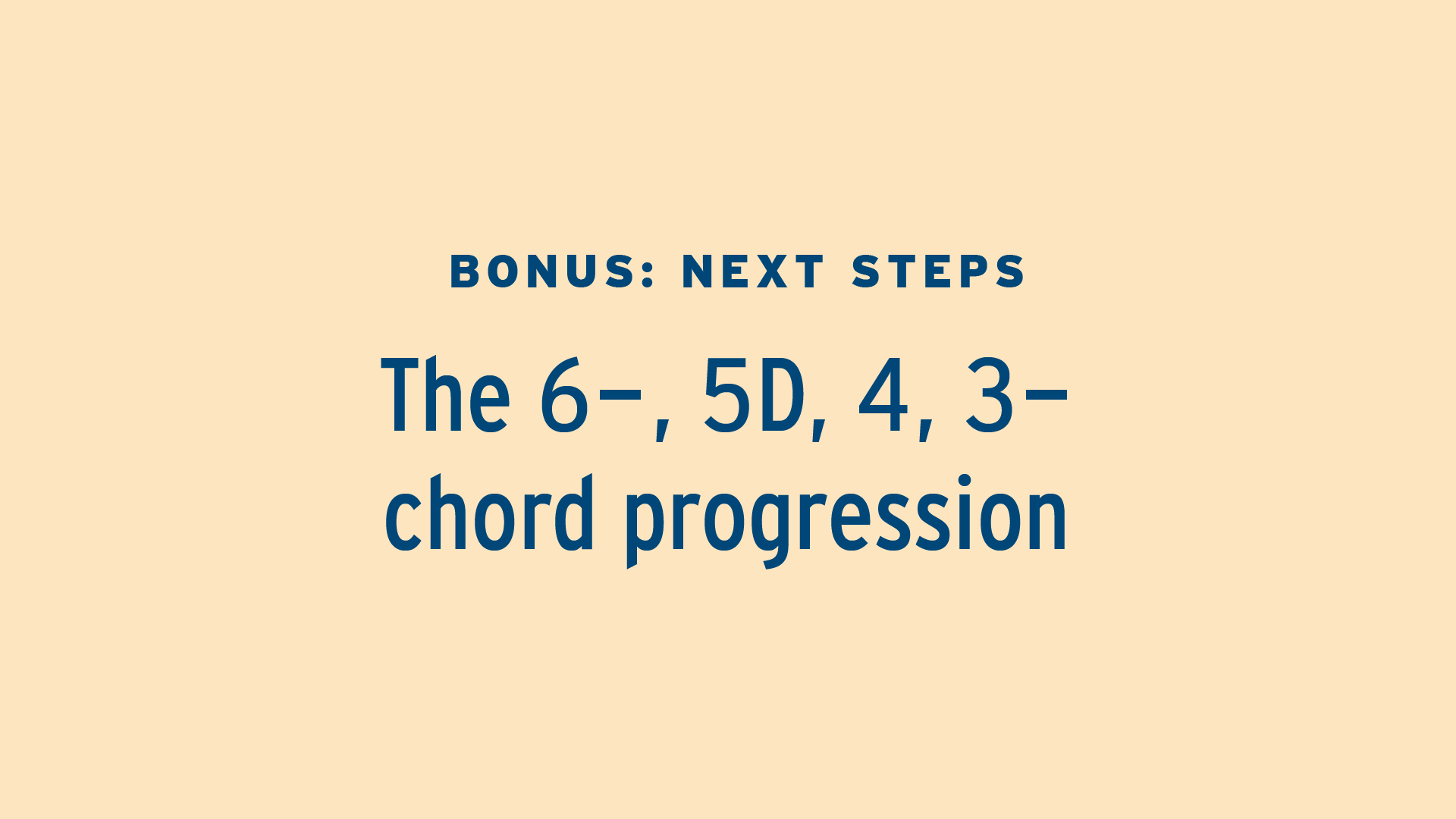This is a very catchy progression that goes down in scale degrees from the 6- chord to the 3- chord.
In this video lesson we explore this chord progression in depth:
IFR materials you will need
For all of the activities described below (and on the subsequent pages), you will need the following two resources:
IFR Jam Tracks Level 3: Pure Harmony Advanced Sing the Numbers 3: Melody Paths
After you have purchased these two courses, all of the links below will take you directly to the appropriate lesson pages.
Let's get started!
Here are the activities I propose for you to explore this chord progression:
1) Practice with IFR Jam Tracks Level 3: Pure Harmony Advanced
Lesson 14 - Chords 6-, 5D, 4, 3-
Practice the following activities over each jam track:
a) Observe the sensation of the 2 chord. Just listen to the backing track and try to feel this chord without playing or singing anything. Just listen and feel. b) Sing/play the roots of the chords over the backing tracks (in many keys). c) Sing/play Melody Paths over the backing tracks (in many keys). The ultimate goal for this exercise is to be able to sing melody paths without the help of the instrument and without having to look at the drawing of the chord columns. d) Improvise freely over the jam tracks.
2) Sing the Numbers 3: Melody Paths
While you sing along with me over the following tracks, I want you to observe the descendant nature of the progression, and how when you arrive to the 3- chord your ear feels invited to go back to the top, to the 6- chord, and start descending again.
Lesson 18 - Chords 6-, 5D, 4, 3-
3) Playlist of songs with chords 6-, 5D, 4, 3-
All of the songs on this playlist contain this descending movement from the 6- chord down to the 3- chord.
Playlist on Spotify: https://open.spotify.com/playlist/4ddrPNZDg5uhOYWL8D4cqk?si=169d1c00f9314fd0.
If you are wondering why this playlist is so short while this progression sounds so familiar, it's because there are very few songs that contain this exact chord progression (6-, 5D, 4, 3-). But it sounds so familiar to you because there is a variation on this progression that has the same root movement, but where the 3 chord is dominant (3D) INSTEAD OF MINOR (3-). It's known as the "Andalusian cadence", and there are hundreds of songs based on this progression (6-, 5D, 4, 3D).
If you want to listen to these songs and follow the roots, below is a playlist with the "Andalusian cadence" 6-, 5D, 4, 3D. Just keep in mind that the last chord (3D) will sound slightly different, because it contains a note from outside the key. Even if you don't know the 3D chord yet, the essence of the progression is the same and you can use these songs to get used to the descending root movement from the 6- chord to the 3- chord. And it's a good preparation for studying the 3D chord later in Mixed Harmony.
Songs with 6-, 5D, 4, 3D: https://open.spotify.com/playlist/7k2HW5wC6ECuQIuy8fHIEn?si=82261608074a4d29.
Links to all extra activities
Lesson video: Where to go from here? Next steps: The 2- chord in a major context Next steps: The 1, 6-, 2-, 5D progression Next steps: The uplifting movement from 1 to 3- Next steps: Studying the 3- chord with its neighbors Next steps: Chords 2- and 3- in a minor context Next steps: The 6-, 5D, 4, 3- progression Next steps: Studying the 7-b5 chord
